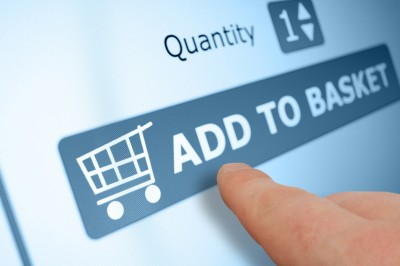
Amazon, Walmart and Ebay are among five online marketplaces targeted by a US probe into the sale of counterfeit goods, with federal investigators finding 42.5 per cent of products bought were fake.
The findings are published in a new report by the Government Accountability Office (GAO), which was tasked to review intellectual property rights enforcement at US borders by US Customs and Border Protection (CBP) and US Immigration and Customs Enforcement (ICE).
The government department found that of the 47 items – including shoes, travel mugs, cosmetics and phone chargers – that it purchased from third-party sellers from “five popular e-commerce websites”, 20 of those items were counterfeit, according to assessments by the rights holders, which noted inferior quality, incorrect markings or construction, and incorrect labelling.
All 13 of the cosmetics, which included the brand Urban Decay, that were purchased from the online marketplaces were found to be fake with discrepancies in the colour, composition, and design of the packaging, while six of the nine Yeti-branded travel mugs purchased were also bogus. Meanwhile, none of the shoes (Nike Air Jordans) and just one of the phone charges were deemed counterfeit.
Rights-holder testing also showed that GAO purchased at least one counterfeit item and one authentic item from each of the five e-commerce websites, which included Amazon, Walmart, Ebay, Sears and Newegg.
“US agencies and businesses have cited an expansion of IP crimes and an increasing use of internet websites to facilitate the sale of counterfeit goods imported from overseas in recent years,” the report said. “The results of our undercover purchases from third-party sellers indicate that counterfeit goods are available on a variety of popular e-commerce websites frequented by US consumers. These changes in the marketplace present a number of challenges for US agencies, the private sector, and consumers.”
The report – which examines counterfeit goods entering the US, the challenges and efforts to enhance IPR enforcement – notes that the market for counterfeit goods entering the United States is changing, which poses new challenges for consumers, the private sector, and complicates efforts by US agencies that enforce intellectual property rights.
“The rise of e-commerce has contributed to a fundamental change in the market for counterfeit goods, according to our analysis of documents from CBP, ICE, and international organisations and our interviews with CBP and ICE officials,” the report said, noting that US agencies and international organisations have observed a shift in the sale of counterfeit goods from “underground” or secondary markets, such as flea markets or sidewalk vendors, to primary markets, including e-commerce websites.
Consumers typically believe they are purchasing authentic goods via this channel, with the fake goods imported to the US in smaller express-carrier or mail packages, on the belief there is a greater chance of going under the radar of enforcement authorities, the report said.
The rise in e-commerce sites also provided additional challenges, the report said, notably that it is becoming more difficult for rights holders and e-commerce websites to identify and investigate individual counterfeit cases because of the growing inventory from a larger registry of sellers and the use of fulfilment houses, as well as the speed and ease at which counterfeiters can reinvent themselves if shut down.
Senator Orrin Hatch, who chairs the Senate Finance Committee, which requested the GAO report, said in response to the findings that he would convene a Senate hearing on the issue. “This report highlights an alarming ratio between authentic and counterfeit goods purchased online.”
In an interview for CBS News, Beverly Baskin, chief executive of the Council of Better Business Bureaus said: “If marketplace leaders struggle to keep out counterfeit products, and if consumers cannot rely on those leading companies to protect them from counterfeits, we have a serious problem that can undermine consumer confidence in the entire retail market.”
The GAO report, which reviewed the enforcement efforts by CBP and ICE, found that CBP had conducted limited evaluation of its efforts, suggesting its activities are not the most efficient or effective. The GAO recommended that CBP evaluate its efforts to enhance IPR enforcement and that it assess potential additional information sharing with the private sector.
In 2016, CBP seized 31,560 shipments of IPR-infringing goods worth an estimated $1.38bn. Sixteen per cent of those seizures contained potential threats to consumer health and safety. Most of the seized goods came from China and Hong Kong. Meanwhile, in the same year, ICE arrested 458 individuals, obtained 328 indictments, and received 276 convictions related to intellectual property crimes.
©
SecuringIndustry.com





